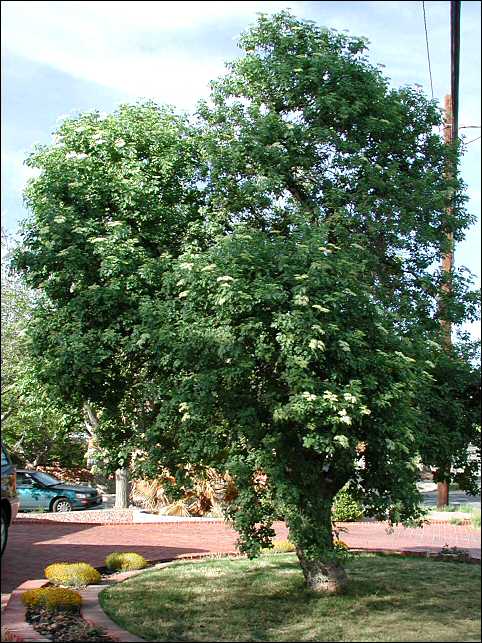

Some Chihuahuan Desert plants supply beauty without character, something never said of the Mexican Elder. This small tree, commonly planted as an ornamental, marches to a different drummer. During the driest, hottest part of the summer, it often sheds its leaves, leaving to view a tormented body with twisted branches, as if it died in agony. But with the arrival of cooler weather, the seemingly dead body is resurrected and covered in green.
If the heat is not accepted with grace, neither is the cold, when once
again the little death occurs, and the winds of spring and tempest often shatter the
hard, brittle branches. You might ask why anyone would put up with a tree that displays
so little grace. Yet, green is treasured in the desert, as are large clusters of
creamy, small flowers. And just maybe some of us relate it to the human condition,
where the almost grotesquely deformed body bespeaks of winning struggle against all
odds, the seasonally punctuated greenery of a never-say-die spirit. Just maybe, for
some of us, it's all about empathy.

Contributor: Arthur H. Harris, Laboratory for Environmental Biology, Centennial Museum, University of Texas at El Paso.
Desert Diary is a joint production of the Centennial Museum and KTEP National Public Radio at the University of Texas at El Paso.

Mexican Elder in bloom in mid-April, El Paso. Photograph by A.H. Harris.